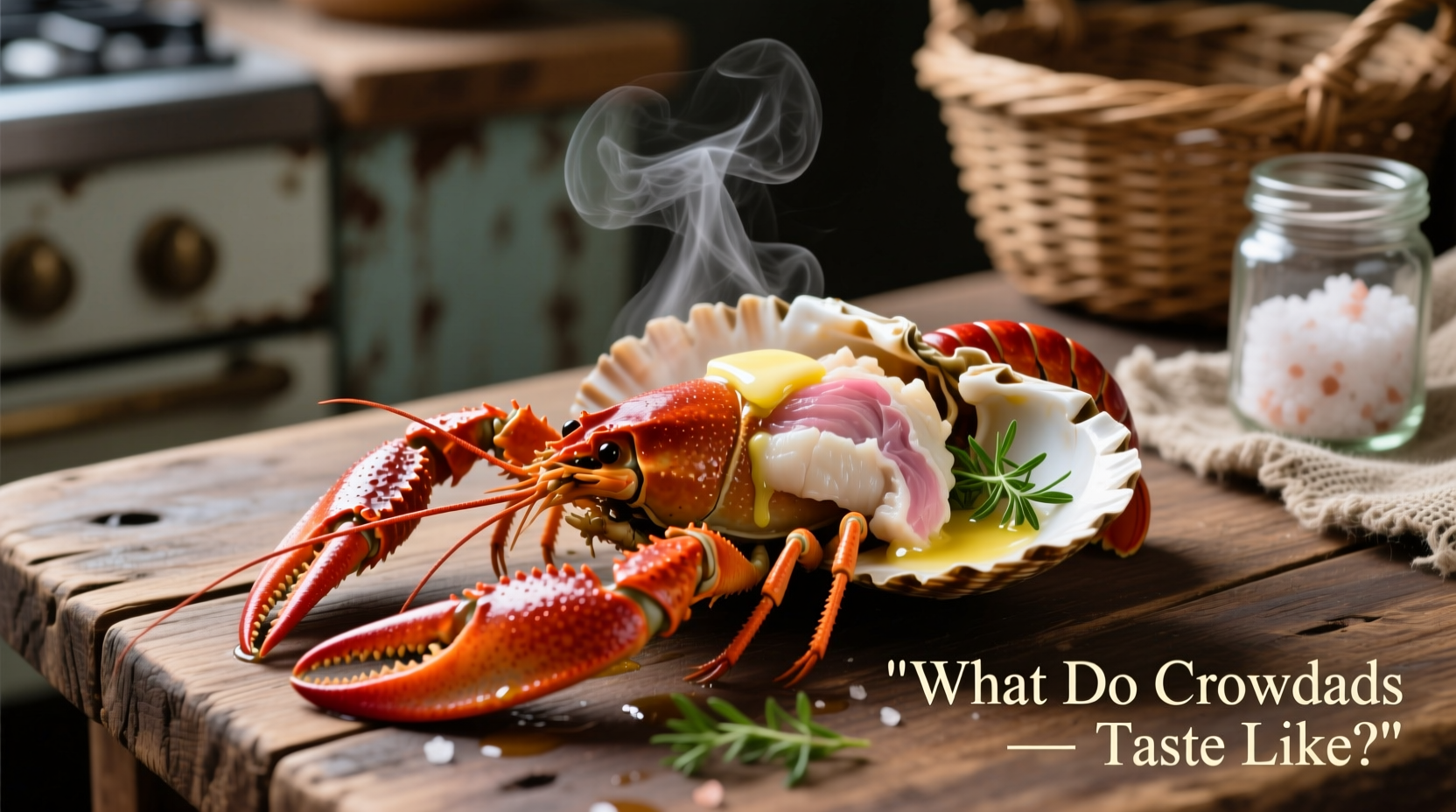Ever wondered what crawdads taste like before trying these freshwater crustaceans? You're not alone. Many curious food enthusiasts want to know how these small lobster-like creatures compare to more familiar seafood. Understanding crawdad flavor helps you appreciate why they're a prized delicacy across Southern cuisine, especially in Louisiana where crawfish boils are cultural events.
Understanding Crawdads: More Than Just Mini-Lobsters
Crawdads, also known as crayfish or crawfish, are freshwater crustaceans found in streams, rivers, and wetlands across North America. While they resemble miniature lobsters, they inhabit entirely different environments. According to the National Wildlife Federation, over 350 species exist in the United States alone, with Louisiana red swamp crawfish being the most commercially harvested variety.

Breaking Down the Crawdad Flavor Profile
The distinctive taste of crawdads comes from several factors working together:
Primary Flavor Characteristics
- Sweetness: A clean, mild sweetness similar to lobster but less intense
- Brininess: Subtle saltwater-like notes despite being freshwater dwellers
- Buttery undertones: Especially noticeable in the head fat ("crawfish butter")
- Mineral notes: A faint earthy quality reflecting their natural habitat
Texture That Makes All the Difference
Crawdad meat offers a unique textural experience. The tail meat provides a firm yet tender bite that pulls apart cleanly when cooked properly. The head contains flavorful fat that many consider the culinary treasure of the crawdad. When steamed or boiled with traditional seasonings, this fat absorbs spices beautifully while maintaining its rich, creamy consistency.
| Seafood Comparison | Flavor Similarity | Texture Comparison | Distinct Differences |
|---|---|---|---|
| Crawdads | N/A | N/A | Freshwater mineral notes, more delicate flavor |
| Lobster | 85% | 90% | Stronger ocean flavor, denser meat, higher price point |
| Shrimp | 70% | 75% | Less sweet, more rubbery texture when overcooked |
| Crab | 60% | 65% | More complex flavor layers, flakier texture |
What Actually Affects Crawdad Flavor?
Several factors determine how crawdads taste when they reach your plate:
Habitat and Diet Influence
The water quality where crawdads live significantly impacts their flavor. As noted by Louisiana State University's AgCenter, crawdads from clean, well-oxygenated waters with abundant vegetation develop sweeter, cleaner flavors. Those from muddy or polluted waters may have stronger earthy or muddy tastes. Their natural diet of aquatic plants, insects, and decaying matter contributes to their distinctive flavor profile.
Cooking Methods Transform Taste
How you prepare crawdads dramatically affects their final flavor:
- Boiling: Traditional Louisiana-style boils with cayenne, garlic, and lemon create spicy, aromatic crawdads where the shell absorbs seasoning
- Steaming: Preserves more of the natural sweetness with less spice penetration
- Frying: Creates a different texture profile while concentrating flavors
- Grilling: Adds smoky notes that complement the natural sweetness
Getting the Best Flavor From Crawdads
Professional chefs recommend these techniques to maximize crawdad flavor:
Proper Purging Is Essential
Before cooking, crawdads should undergo a purging process to clean their digestive tracts. As explained in the LSU AgCenter's crawfish production guide, soaking live crawdads in clean water for several hours removes mud and impurities that could affect taste. This simple step makes a significant difference in final flavor quality.
Don't Overcook Them
Timing is critical when cooking crawdads. Overcooking makes the meat tough and rubbery while diminishing their delicate sweetness. Most experts recommend boiling for just 3-5 minutes after the water returns to a boil. The meat should be opaque but still tender when properly cooked.
Seasoning Balance Matters
While crawdad boils often feature generous amounts of spice, the best preparations maintain balance. Too much cayenne or salt can overwhelm the natural sweetness. Many Southern chefs recommend starting with moderate seasoning levels and adjusting based on personal preference. Adding citrus elements like lemon or orange helps brighten the overall flavor profile.
Traditional Serving Methods That Enhance Flavor
How you serve crawdads affects your tasting experience:
- Whole presentation: Serving crawdads whole allows diners to extract the flavorful head fat
- Corn and potatoes: These traditional boil additions absorb seasoning and complement crawdad flavor
- Lemon wedges: A squeeze of fresh lemon enhances natural sweetness
- Dipping sauces: Remoulade or garlic butter sauces add complementary flavors
Regional Flavor Variations Across America
Crawdad preparation varies significantly by region, creating distinct flavor experiences:
- Louisiana: Spicy boils with cayenne, garlic, and lemon create bold, aromatic crawdads
- Midwest: More subtle preparations often featuring butter and garlic
- Pacific Northwest: Asian-inspired preparations with ginger and soy
- Appalachia: Simple boiling with minimal seasoning to highlight natural flavor
When Crawdads Might Taste Off
Several warning signs indicate crawdads might not taste right:
- Muddy flavor: Indicates insufficient purging or poor water quality
- Ammonia smell: Sign of spoilage - do not consume
- Soft texture: Results from overcooking or improper storage
- Bitter taste: May come from not removing the intestinal tract
Perfect Pairings for Crawdad Flavor
Certain beverages and sides enhance crawdad taste:
- Beer: Crisp lagers or pale ales cut through richness
- White wine: Unoaked Chardonnay complements sweetness
- Rice: Absorbs flavorful boil liquid while balancing spice
- Cornbread: Traditional pairing that contrasts spicy elements











 浙公网安备
33010002000092号
浙公网安备
33010002000092号 浙B2-20120091-4
浙B2-20120091-4